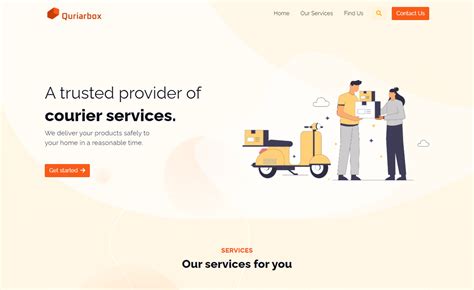Traffic Congestion Problems

Traffic congestion is a pressing issue faced by urban areas worldwide, with its adverse impacts on the economy, the environment, and the overall quality of life. As cities continue to expand and populations grow, the challenge of managing traffic and reducing congestion becomes increasingly crucial. This comprehensive article delves into the intricacies of traffic congestion problems, exploring their causes, effects, and potential solutions, backed by real-world examples and expert insights.
Understanding Traffic Congestion

Traffic congestion refers to the excessive buildup of vehicles on roads and highways, resulting in slower speeds, longer travel times, and reduced efficiency of transportation networks. It is a complex issue influenced by various factors, including urban planning, population density, economic activity, and transportation infrastructure.
In cities like Los Angeles, London, and Beijing, traffic congestion is an everyday struggle, affecting millions of commuters. The consequences of this congestion are far-reaching, impacting not only individuals' daily lives but also businesses, the environment, and the overall sustainability of urban areas.
Causes of Traffic Congestion
Several key factors contribute to traffic congestion. These include:
- Population Growth and Urbanization: As cities expand and populations increase, the demand for transportation infrastructure often lags behind, leading to inadequate road capacity and increased congestion.
- Vehicle Ownership and Usage: Rising levels of vehicle ownership, particularly private cars, contribute significantly to congestion. The convenience and flexibility offered by personal vehicles often lead to a higher number of vehicles on the roads.
- Commuting Patterns: Peak-hour commuting, where a large number of people travel to and from work simultaneously, is a major contributor to congestion. This creates "rush hours" when roads are at their most congested.
- Road Network Design: Poorly designed road networks, including inadequate intersections, limited lane capacity, and a lack of alternative routes, can exacerbate congestion issues.
- Public Transportation Infrastructure: Inadequate or inefficient public transportation systems can discourage people from using alternatives to private cars, further contributing to congestion.
- Special Events and Incidents: Large-scale events, accidents, or road closures can disrupt traffic flow and cause temporary congestion, highlighting the vulnerability of transportation networks.
The interplay of these factors makes traffic congestion a multifaceted challenge that requires comprehensive solutions.
Impacts of Traffic Congestion

The consequences of traffic congestion are wide-ranging and can be felt across various aspects of urban life.
Economic Impact
Traffic congestion has significant economic implications. It leads to increased travel times and fuel consumption, resulting in higher transportation costs for businesses and individuals. Delayed deliveries, reduced productivity, and increased operational expenses can impact businesses, affecting their competitiveness and profitability.
A study by the Texas A&M Transportation Institute estimated that traffic congestion cost the US economy approximately $179 billion in 2020, highlighting the substantial economic burden it imposes.
Environmental Impact
Traffic congestion also takes a toll on the environment. With vehicles spending more time on the roads, emissions of pollutants and greenhouse gases increase, contributing to air pollution and climate change. The inefficient burning of fuel in congested traffic conditions further exacerbates these environmental issues.
In London, for instance, air pollution caused by vehicle emissions is a major concern, leading to health issues and contributing to the city's declaration of a "high" air pollution alert on several occasions.
Social and Quality of Life Impact
Traffic congestion affects individuals’ daily lives and overall quality of life. Commuters spend more time in traffic, leading to increased stress, frustration, and reduced leisure time. The physical and mental health impacts of congestion are significant, with studies linking it to higher levels of anxiety, depression, and even cardiovascular diseases.
In addition, congestion can affect access to services and opportunities, particularly for those without access to private vehicles. This can create social and economic inequalities, impacting the overall well-being of urban communities.
Solutions and Strategies
Addressing traffic congestion requires a multi-faceted approach, involving urban planning, transportation infrastructure development, and policy interventions. Here are some key strategies being implemented and explored:
Urban Planning and Design
Effective urban planning plays a crucial role in mitigating traffic congestion. This involves designing cities with a balanced transportation network, including efficient road systems, robust public transportation, and active mobility options like walking and cycling.
For instance, the city of Copenhagen has implemented a comprehensive urban planning strategy, focusing on creating a "15-minute city" where residents can access most of their daily needs within a 15-minute walk or cycle. This approach, combined with excellent public transportation and cycling infrastructure, has helped reduce congestion and promote sustainable mobility.
Transportation Infrastructure Development
Investing in transportation infrastructure is essential to manage congestion. This includes expanding and improving road networks, building new public transportation systems, and developing intelligent transportation systems (ITS) to optimize traffic flow.
The Dubai Roads and Transport Authority has embarked on an ambitious project to develop an advanced ITS, including intelligent traffic signals and a centralized traffic control system. This system aims to optimize traffic flow, reduce congestion, and improve road safety.
Promoting Sustainable Mobility
Encouraging the use of sustainable mobility options, such as public transportation, walking, and cycling, is a key strategy to reduce congestion. This involves improving the quality and accessibility of public transportation, creating dedicated infrastructure for active mobility, and implementing incentives for sustainable commuting.
In Amsterdam, the city has implemented a comprehensive cycling infrastructure, including dedicated bike lanes and parking facilities. This, combined with an efficient public transportation system, has led to a significant reduction in private car usage and congestion.
Intelligent Transportation Systems (ITS)
ITS leverages technology to optimize transportation systems, manage traffic flow, and provide real-time information to commuters. This includes smart traffic signals, variable speed limits, and traffic management centers that use data analytics to improve traffic flow.
The Singapore Land Transport Authority has implemented an advanced ITS, using real-time traffic data and predictive analytics to manage traffic flow and reduce congestion. This system, combined with a robust public transportation network, has made Singapore one of the least congested cities globally.
Policy and Regulatory Measures
Policy interventions can play a crucial role in managing congestion. This includes congestion pricing, where drivers pay a fee to enter congested areas, and parking management, which involves controlling parking supply and pricing to discourage unnecessary driving.
London's Congestion Charge is a well-known example of congestion pricing. Since its implementation in 2003, it has reduced congestion and improved traffic flow in the city center, leading to a more efficient transportation system.
Future Implications and Innovations
As cities continue to grow and evolve, the challenge of managing traffic congestion will remain a critical focus for urban planners and policymakers. Several key trends and innovations are expected to shape the future of congestion management.
Smart Cities and Connected Vehicles
The concept of smart cities, where infrastructure and services are integrated and optimized using digital technology, offers immense potential for congestion management. Connected vehicles, which can communicate with each other and with the infrastructure, will play a crucial role in this vision. By sharing real-time data, vehicles can help optimize traffic flow and reduce congestion.
For instance, the Toyota City project in Japan is exploring the use of connected vehicles and smart infrastructure to create a seamless and efficient transportation system. This project aims to reduce congestion, improve road safety, and enhance the overall urban experience.
Automated and Electric Vehicles
The widespread adoption of automated and electric vehicles is expected to transform urban mobility. Automated vehicles can optimize traffic flow and reduce congestion by maintaining consistent speeds and reducing human error. Electric vehicles, with their lower environmental impact and potential for vehicle-to-grid energy systems, can also contribute to more sustainable and efficient urban transportation.
The Tesla Autopilot system is a leading example of automated vehicle technology, offering advanced driver assistance features that can improve traffic flow and reduce congestion. Similarly, the increasing popularity of electric vehicles, particularly in cities, is helping to reduce emissions and congestion.
Shared Mobility and Micro-Mobility
The rise of shared mobility services, such as ride-sharing and car-sharing, and micro-mobility options, including e-scooters and bike-sharing, is expected to reduce the need for private car ownership and usage. This shift towards shared and active mobility can significantly reduce congestion and improve the sustainability of urban transportation.
Companies like Uber and Lyft have already revolutionized urban mobility, offering convenient and affordable ride-sharing options. Similarly, micro-mobility companies like Lime and Bird are providing convenient and sustainable transportation alternatives, particularly for short-distance trips.
Data-Driven Traffic Management
The increasing availability of real-time traffic data and advanced analytics offers immense potential for congestion management. By leveraging big data and artificial intelligence, cities can optimize traffic flow, predict congestion, and make data-driven decisions to improve transportation systems.
The INRIX Global Traffic Scorecard is a comprehensive data platform that provides real-time and historical traffic data for cities worldwide. This platform, combined with advanced analytics, can help cities identify congestion hotspots, optimize transportation systems, and make informed policy decisions.
How does traffic congestion affect the environment?
+
Traffic congestion contributes to air pollution and climate change by increasing vehicle emissions. With vehicles spending more time on the roads, they burn fuel less efficiently, leading to higher emissions of pollutants and greenhouse gases. This not only harms the environment but also poses health risks to urban populations.
What are some effective strategies to reduce traffic congestion in cities?
+
Effective strategies include investing in transportation infrastructure, promoting sustainable mobility options like public transportation and cycling, implementing intelligent transportation systems (ITS) for real-time traffic management, and adopting policy measures like congestion pricing and parking management.
How do automated and electric vehicles contribute to congestion management?
+
Automated vehicles can optimize traffic flow and reduce congestion by maintaining consistent speeds and reducing human error. Electric vehicles, with their lower environmental impact and potential for vehicle-to-grid energy systems, can also contribute to more sustainable and efficient urban transportation, reducing the need for private car usage.



